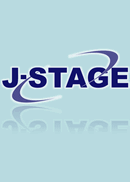Volume 37, Issue 1
Displaying 1-19 of 19 articles from this issue
- |<
- <
- 1
- >
- >|
-
2014Volume 37Issue 1 Pages 4
Published: 2014
Released on J-STAGE: March 28, 2014
Download PDF (106K)
-
2014Volume 37Issue 1 Pages 5-9
Published: 2014
Released on J-STAGE: March 28, 2014
Download PDF (305K) -
2014Volume 37Issue 1 Pages 10-15
Published: 2014
Released on J-STAGE: March 28, 2014
Download PDF (367K) -
2014Volume 37Issue 1 Pages 16-21
Published: 2014
Released on J-STAGE: March 28, 2014
Download PDF (349K) -
2014Volume 37Issue 1 Pages 22-26
Published: 2014
Released on J-STAGE: March 28, 2014
Download PDF (319K)
-
2014Volume 37Issue 1 Pages 27-32
Published: 2014
Released on J-STAGE: March 28, 2014
Download PDF (516K) -
2014Volume 37Issue 1 Pages 33-35
Published: 2014
Released on J-STAGE: March 28, 2014
Download PDF (264K) -
2014Volume 37Issue 1 Pages 36-38
Published: 2014
Released on J-STAGE: March 28, 2014
Download PDF (252K)
-
2014Volume 37Issue 1 Pages 39-41
Published: 2014
Released on J-STAGE: March 28, 2014
Download PDF (192K)
-
2014Volume 37Issue 1 Pages 42-49
Published: 2014
Released on J-STAGE: March 28, 2014
Download PDF (676K)
-
2014Volume 37Issue 1 Pages 50-53
Published: 2014
Released on J-STAGE: March 28, 2014
Download PDF (329K)
-
2014Volume 37Issue 1 Pages 54-57
Published: 2014
Released on J-STAGE: March 28, 2014
Download PDF (335K)
-
2014Volume 37Issue 1 Pages 58-60
Published: 2014
Released on J-STAGE: March 28, 2014
Download PDF (499K) -
2014Volume 37Issue 1 Pages 61-63
Published: 2014
Released on J-STAGE: March 28, 2014
Download PDF (334K)
-
2014Volume 37Issue 1 Pages 64-65
Published: 2014
Released on J-STAGE: March 28, 2014
Download PDF (182K)
-
2014Volume 37Issue 1 Pages 66-67
Published: 2014
Released on J-STAGE: March 28, 2014
Download PDF (746K)
-
2014Volume 37Issue 1 Pages 71
Published: 2014
Released on J-STAGE: March 28, 2014
Download PDF (151K)
-
2014Volume 37Issue 1 Pages 72
Published: 2014
Released on J-STAGE: March 28, 2014
Download PDF (173K) -
2014Volume 37Issue 1 Pages 73
Published: 2014
Released on J-STAGE: March 28, 2014
Download PDF (32K)
- |<
- <
- 1
- >
- >|
